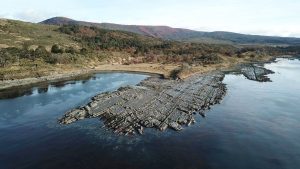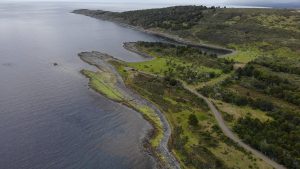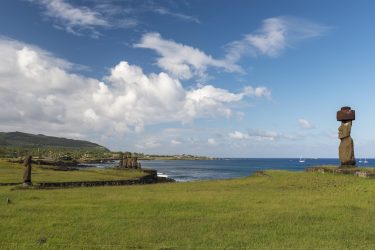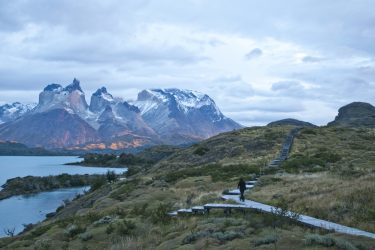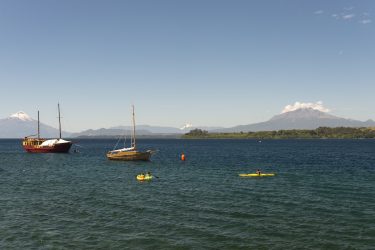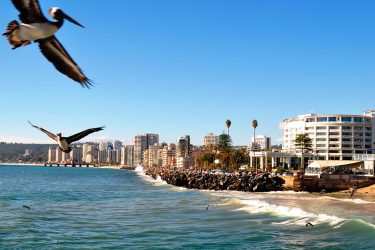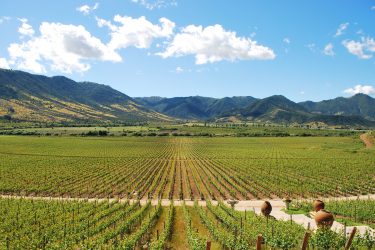Region Magallanes y la Antartica Chilena
descriptivos
Glaciar Perito Moreno.
Duration08 Hrs Aprox
Opera: Everyday
Includes: Transportation and Assistance.
Note: Does not include entrance fee to Los Glaciares National Park.
Minimo: 4 passengers
The Perito Moreno glacier offers a spectacle of sights and sounds, the light detachments of ice occur permanently, so it is very possible to witness this particular phenomenon of nature. The uniqueness of the glacier lies not only in its 30 km long and its easy access, but also in the fact that it is one of the few that is advancing, while most of the glaciers in the world are retreating.
The walkways, balconies and viewpoints installed in the national park allow you to approach the Perito Moreno without danger, even for the elderly or people with physical disabilities. The excursion concludes with the return to Puerto Natales by the same route.
Full day excursion departing from Puerto Natales around 7 am and returning to the hotel around 10 pm.
After crossing the border posts at Cerro Castillo and Cancha Carrera, the route crosses the immensity of the Argentinean Patagonian steppe towards the beautiful tourist town of El Calafate, about 270 km away from Puerto Natales. During the trip you can see local fauna species such as guanacos and rheas and also appreciate the Argentino Lake and the Santa Cruz River on its way to the Atlantic Ocean.
After a brief stop with time to spare in El Calafate, we take the 80 km route to Los Glaciares National Park, our final destination.
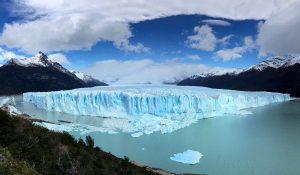
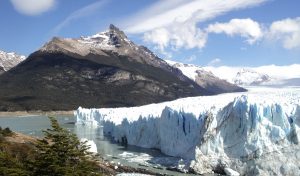
Full Day Torres Del Paine.
Duration08 Hrs Aprox
Opera: Everyday
Includes: Transportation, Box Lunch, entrance fees to Torres del Paine and Milodon Cave, and assistance.
The excursion begins with a visit to the Milodon Cave, a remarkable cavern 200 meters long, 30 meters high and 80 meters wide, located 25 km from Puerto Natales. A half-hour walk will take us into the cave, known for the discovery of fresh skin and bones of a prehistoric species of giant sloth, the mylodon.
Remains of other extinct animals, such as the dwarf horse and the saber-toothed tiger, have also been found there.We continue to Cerro Castillo where we make a stop at the cafeteria and then continue on to Torres del Paine crossing numerous estancias and a landscape that ranges from steppe to deciduous forest. On the way it is possible to spot local fauna including the South American ostrich and the guanaco, a camelid.
Torres del Paine is known worldwide for the massifs that give it its name, granite giants shaped by the force of glacial ice.
After entering the park we discover a series of colorful lagoons, ice-covered mountains and abundant local fauna.
Then we will stop for a 20-minute hike to the Salto Grande waterfall on the Paine River.
After lunch we continue to Grey Lake, where we will take a walk to a panoramic point from where we can see the icebergs and the glacier of the same name.
Afterwards, we return to Puerto Natales by the same route, or by the road that borders lakes Toro, Porteño and Sofía.
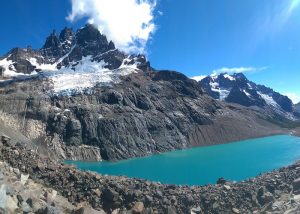
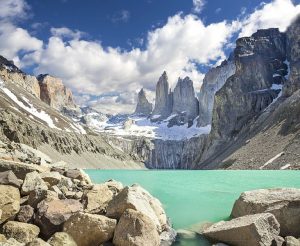
Navegación Balmaceda/Serrano
Duration08 Hrs Aprox
Opera: Diario en temporada alta, solo domingos temporada baja.
Includes: Transportation, Guide and Assistance.
The Balmaceda and Serrano glaciers are located within the Bernardo O'Higgins National Park, which is 31 miles northwest of the city of Puerto Natales and is part of the Andes mountain range. Visiting it means admiring a majestic place, almost untouched by man.
Its access is only by sea, navigating through the Fjord of Last Hope, which owes its name to the "last hope" of finding the Strait of Magellan in 1557, for an expedition that was looking for it from the Pacific Ocean.
The trip begins at the dock of Puerto Bories, located 15 minutes from the center of Puerto Natales, once the navigation begins, it is possible to see the buildings belonging to the Bories meat processing plant, which was one of the largest meat processing industries in Patagonia, you can also observe a colony of Imperial Cormorants, a small colony of sea lions and a variety of plants that make up the flora, such as Coigüe, Canelo, Lenga, Ñire, Chilco and Calafate among others.
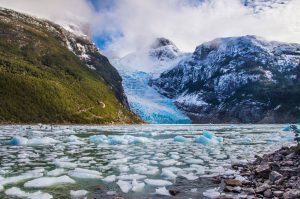
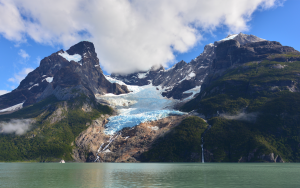
City tour Punta Arenas.
Duration03 Hrs Aprox
Opera: Everyday
Includes: Transportation, Guide and Assistance.
Punta Arenas is the capital of Chilean Patagonia and the departure point for numerous expeditions to the Antarctic continent.
Founded in 1848 at the southern tip of the American continent, Punta Arenas was initially a penal colony and later became an important center for European immigrants and immigrants from the Chiloé archipelago.
On this tour we will visit the Cerro de la Cruz, with colorful views of the city, the Strait of Magellan and Tierra del Fuego Island. Afterwards we will go to Muñoz Gamero Square, which has been the heart of Punta Arenas since the end of the 19th century and enjoys great activity and craft stalls where it is possible to buy souvenirs, as well as appreciate the monument to Hernando de Magallanes and neoclassical buildings built by cattle magnates.
The tour continues (depending on interest), in one of the interesting museums or the well-kept cemetery of the city.
Before returning to the hotel, the excursion also allows you to see the northern part of the city with its monuments, such as the one dedicated to the shepherd, the Croatian immigrant and oil.
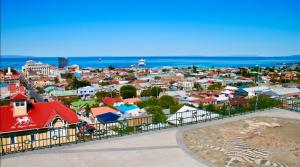
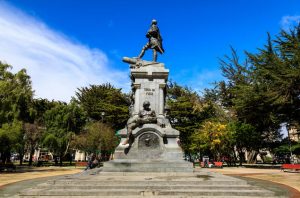
Pinguinera Isla Magdalena
Duration05 Hrs Aprox
Opera: Diario ,Noviembre a Marzo.
Includes: Transportation, Guide and Assistance.
The richness of this island invites us to admire a spectacle created by nature. This protected wild area was declared a National Park in August 1966 and reclassified Natural Monument in 1982. Its objective is to protect the avifauna of the place, composed mainly of penguins, cormorants, seagulls, among other species, being there one of the largest colonies of penguins in Chile, whose population has been estimated at 50,000 pairs of Magellanic Penguins (Sphenicus Magallanicus), which constitutes more than 95 percent of the avifaunal biomass.
Magdalena Island is located in the center of the Strait of Magellan, 35 km north of the city of Punta Arenas, and the excursion begins by sailing the waters of the mythical Strait for 2 ½ hours, the same route of the most daring sailors in history. Once we arrive at the island, we will be able to take a walk among hundreds of penguins that will come out in our path, which also allows us to reach the lighthouse of the island, from where we have a view that dominates the entire island and the surrounding areas. The time of permanence in the island is of approx.
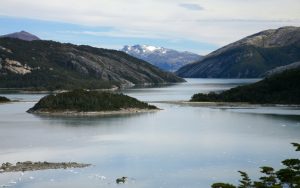
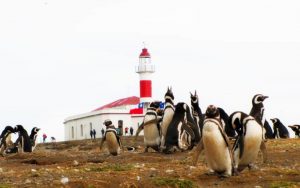
Fuerte Bulnes.
Duration03 ½ horas.
Opera: Everyday
Includes: Transportation, Guide and Assistance.
The route borders the mythical Strait of Magellan, where it is possible to see many seabirds such as oystercatchers, wild geese, several species of ducks, cormorants, and on a lucky day, perhaps, dolphins and sea lions. The park is located 52 kms. south of the city of Punta Arenas, where you can enjoy a variety of activities.
Located in the highest part of the Park, the Museum houses a modern multimedia exhibition that through art and science explains the formation processes of the territory, the life forms that inhabit it and the history of human presence in this part of the world. It has a large terrace where you can appreciate the immensity of the Strait and see Puerto del Hambre (MHN). Cafeteria and souvenir store of the Park only available at the Museum. del Estrecho: ¡Ubicado en la parte más alta del Parque, el Museo alberga una moderna muestra multimedia! que a través del arte y la ciencia explica los procesos de formación del territorio, las formas de vida que lo habitan y la historia de la presencia humana en este lugar del mundo. Cuenta con una amplia terraza donde se puede apreciar la inmensidad del Estrecho y avistar Puerto del Hambre (MHN). Cafetería y tienda de Souvenirs del Parque sólo disponible en el Museo.
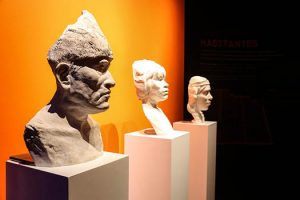
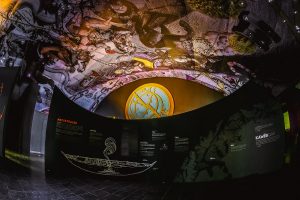
Fuerte Bulnes (National Historic Monument) Rebuilt between 1941 and 1943, Fort Bulnes has been for years an important
A "must see" for the inhabitants of the Strait of Magellan. Originally founded in 1843, it was the first Chilean settlement in the territory and gave rise to the founding of the city of Punta Arenas 5 years later.
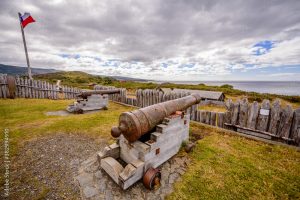
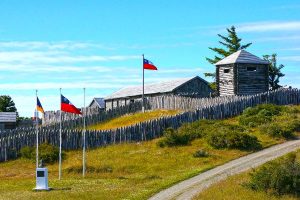
Sendero Bosque del Viento: This trail begins at the O'Higgins Lighthouse (located behind Fort Bulnes) and goes through a forest of Magellan Coihues that grows perpendicularly due to the strength of the prevailing wind. The trail leads to the viewpoint of the Strait, from where you can see the passage of ships, birds, dolphins and whales.
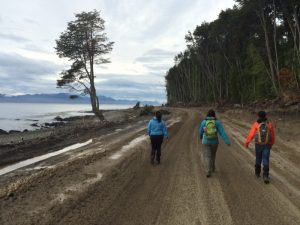
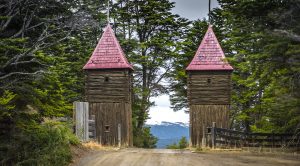
Sendero de la Costa: This trail runs through the forests and rocky areas around the fort through three strategically located viewpoints that allow unparalleled views of the surrounding landscape. This trail runs through the forests and rocky areas around the fort through three strategically located viewpoints that allow for unparalleled views of the surrounding landscape.
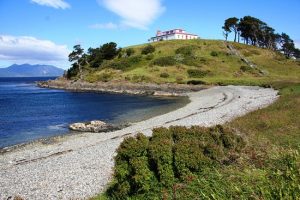
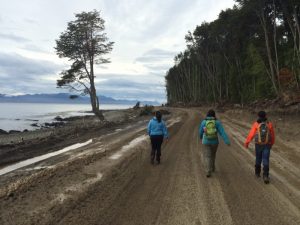
Puerto del Hambre: King Don Felipe City (Puerto del Hambre) was founded in 1584 by Pedro Sarmiento de Gamboa on behalf of the Spanish crown in order to take possession and colonize the Strait of Magellan. Three years later, the tragic outcome of the city was recounted by one of the few survivors. To promote recovery, prevent deterioration and allow research work without interference, the site is closed to the public.
